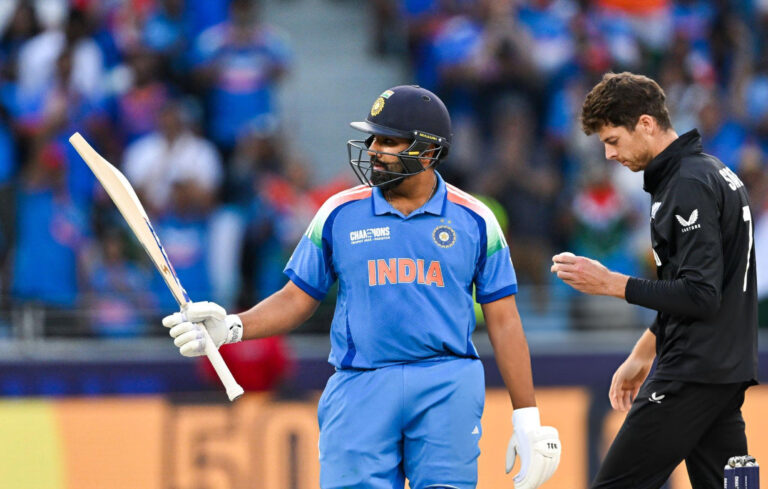
Cricket is no longer just about skill, strategy, and athleticism. The sport has embraced cutting-edge technology, creating safer, smarter, and more exciting experiences for players and fans alike. Among these innovations, smart helmets and sensors have emerged as game-changers, revolutionizing player safety, performance monitoring, and data-driven analysis.
In this blog, we explore the role of smart helmets and sensors in cricket, the science behind them, and how these innovations are shaping the future of the game.
1. The Need for Smart Helmets
Cricket is a high-speed sport, with balls reaching speeds of over 150 km/h. Traditional helmets provided protection against direct impact, but they lacked real-time monitoring of force, angle, and player health. Smart helmets address these limitations by:
- Detecting impact intensity to prevent concussions.
- Monitoring player posture and positioning during batting or fielding.
- Sending instant alerts to coaching and medical teams in case of dangerous collisions.
These helmets ensure that player safety is prioritized, reducing long-term risks while maintaining performance standards.
2. How Smart Helmets Work
Smart helmets are equipped with integrated sensors and advanced microchips that collect data in real-time:
- Accelerometers: Measure speed, direction, and force of impacts.
- Gyroscopes: Track head movement, rotation, and angle during play.
- Pressure Sensors: Detect unusual force that may indicate potential injury.
- Connectivity Modules: Send data to coaches, physiotherapists, and medical staff instantly.
This real-time monitoring system allows teams to react quickly to injuries and adjust player strategies for safety.
3. Sensors Beyond Helmets
Cricket sensors aren’t limited to helmets—they are now embedded in bats, gloves, pads, and clothing, providing comprehensive data about player performance:
- Bat Sensors: Analyze swing speed, shot timing, and sweet spot contact.
- Glove Sensors: Monitor grip, wrist movement, and shot control.
- Clothing Sensors: Track player movement, energy expenditure, and fatigue levels.
When combined with smart helmets, these sensors create a holistic view of a player’s biomechanics, enabling data-driven coaching and performance improvement.
4. Safety Impact of Smart Helmets
The most critical advantage of smart helmets is enhanced safety:
- Concussion Prevention: Helmets detect dangerous impacts and alert medical staff immediately.
- Customized Protection: Helmets can be tailored to each player’s head size and playing style.
- Injury Analysis: Post-match data helps understand patterns that lead to injuries, allowing preventive measures.
With these innovations, cricket is moving toward a safer playing environment, protecting both experienced stars and emerging talents.
5. Performance Monitoring and Analytics
Smart helmets and sensors aren’t just about safety—they also enhance performance:
- Batting Insights: Helmets track head position, helping players maintain balance during shots.
- Bowling Analysis: Fielders and bowlers receive feedback on reflexes, positioning, and impact avoidance.
- Fatigue Management: Sensors monitor stress and movement, helping coaching teams manage workloads during tournaments.
Data from helmets and sensors allows teams to optimize training programs, improve consistency, and gain a competitive edge.
6. Integration with Technology Platforms
Smart helmets are connected to digital platforms and mobile apps, making real-time data accessible to coaches, analysts, and players:
- Live Monitoring Dashboards: Track player health metrics and on-field impacts.
- AI-Powered Analysis: Predict potential injuries and suggest adjustments in technique.
- Fan Engagement: Selected insights are shared with fans through broadcasts and apps, creating an interactive experience.
This integration turns every match into a data-rich environment, where safety and performance meet analytics.
7. The Future of Smart Cricket Gear
The future promises even more innovations in cricket gear:
- Enhanced Sensor Accuracy: Miniaturized sensors will provide more precise readings of impact and movement.
- AI-Assisted Coaching: Helmets will suggest instant corrections in stance, footwork, or shot selection.
- Connected Teams: Real-time data sharing between players, coaches, and medical staff will redefine team strategies.
- Fan Interaction: Virtual reality (VR) and augmented reality (AR) experiences will allow fans to see data in action during live matches.
Smart helmets and sensors are set to redefine cricket safety, performance, and fan engagement in the coming years.
8. Impact on Cricket Culture
- Player Confidence: Knowing they are protected and monitored allows players to focus fully on performance.
- Strategic Advantage: Coaches use real-time data to make tactical decisions during matches.
- Fan Awareness: Fans gain a deeper understanding of the game through data visualization and interactive experiences.
Smart cricket gear is transforming how the sport is played, watched, and analyzed globally.
Conclusion
The Cricket Tech Lab, with its smart helmets and sensors, represents the fusion of sports and science. These innovations ensure player safety, enhance performance, and provide data-driven insights that benefit teams, fans, and analysts alike.
As cricket continues to evolve, smart helmets and integrated sensors will be at the core of every major league and international match, shaping a safer, more strategic, and immersive


